For those of you growing tomatoes for the first time, it’s likely that you’ve seen a few interesting little problems. Maybe you had tons of flowers but not many fruits. Perhaps you had weak stems or “leggy” plants that sent suckers out everywhere but didn’t really do much to feed your family.
In almost all cases, the problems that beginners face with tomatoes are related to one of three things: overwatering, poor nutrition, or these tender plants getting scorched. However, we’re going to look a little deeper in this article with ten tips and tricks to get your tomato plants producing to their fullest potential. Let’s dive in!
-
Overwatering
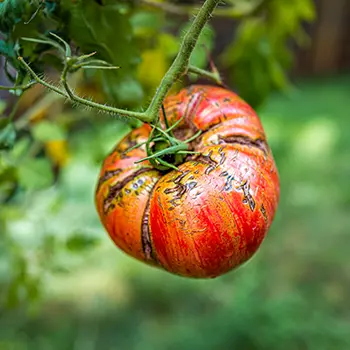
Overwatering is a common issue in most gardens, especially in those using containers. Though there are hundreds of different soil formulas that promise to keep overwatering from happening, they simply don’t work that well.
There’s also the factor of rain and, with the way storms are these days, it seems that we bake for a week and then get a deluge so strong that we could practically swim in our own yards. That isn’t what tomatoes want. They desire well-drained soil for their tender roots and too much water tends to rot them from the inside out.
How do you avoid this? Stick your finger into the top inch or so of soil near them. If the leaves of the plant aren’t curling or drooping (ignore drooping in 95f+ degree weather) and the soil is damp, don’t water them until later. This gives them time to “dry out”. They’ll appreciate that.
-
Scorch

On the flip side, tomatoes are very prone to scorching in extremely sunny weather. Strangely enough, they seem to desire hot, sunny weather the most. They just bake in it. If at all possible, place a shade cloth over your plants during the hottest part of the day or place one so the sun will instantly create shade for them. If in pots, move them to a shaded area. If this is impossible on both accounts, try putting them in dappled sunlight areas next year.
-
Leggy Plants
If it seems that your tomatoes are weak-stemmed (for instance, they’re incredibly tall but floppy or falling over with typical supports), you probably need more concentrated sunshine for them. Try giving them reflective sunlight via an overturned piece of metal in their direction and cutting back on fertilizer for a little while. Trim off areas that are falling over or breaking since this will only contribute to rot.
-
Low Production, High Flowers
This can be one of two issues: all of your flowers are male and simply provide fertilizer for female flowers, or you aren’t giving the plant enough nutrition to work with the fertilized flowers that it has. If you have mostly male flowers, well, sometimes that just happens. There isn’t a lot that you can do for that since the plant decides what type of flower it is putting out.
If you have female flowers that are pollinated but are not seeming to “take” to the stem, offer liquid fertilizer at the base of the plant. This should give the plant enough nutrition to get going.
-
Fertilizer Tips

Specialized tomato fertilizer is available, but I always add a little bone broth to it. This may sound out there for some of you, but bone broth offers a great deal of calcium and trace minerals that commercial fertilizer often lacks. So, rather than mixing your fertilizer into the water; try mixing it into the unsalted bone broth and watch your beefeater tomatoes truly be beefeaters.
You can also make fertilizer at home with good compost. In that case, I strongly suggest feeding it as tea rather than directly planting in it. Tomatoes are thirsty plants and seem to appreciate fertilizer tea.
-
In Ground Planting Vs Pots
In-the-ground planting is great for tomatoes but they seem to get a little sluggish the second their roots encounter clay. If you have heavy soil, as I do, go for pots with solid potting soil made for vegetables and tomatoes. It also makes staking and trellising easier.
-
The War With Hornworms

Hornworms will destroy your crop in minutes and they are difficult to get rid of, to say the least. Diatomaceous Earth will get rid of them forever, but you’ll have eggs to contend with that are all over your plants. Remove the eggs by hand and throw them away in a double-bagged trash bag. Diatomaceous Earth works by slicing the little worms into ribbons. It may seem cruel, but it is a far faster death than most others these hornworms suffer. And remember, they’re a favorite for parasitic wasps to lay eggs on. You’re not only saving your garden but doing them a favor.
-
Seedlings or Starting From Seed
In most plants, I am a very big advocate for starting from seed. This isn’t the case with tomatoes. If you can find the variety of tomato you want to plant in a healthy seedling (even if it’s at Lowe’s or some such like that) go ahead and get it. It’s much easier to work with and you can already see plant issues (such as suckers or blossom rot, etc) much earlier on.
-
Blossom End Rot
This tends to affect stone fruits more than it does tomatoes, but cases do seem to be increasing so I included this. Blossom end rot should be treated with a light anti-fungal coppercide. Keep children and pets away from these plants and make sure that the bottle you’re using states that the plants are still safe for consumption. This is the only way to treat these plants for this because the non-copper fungicide does not work. Blossom end rot looks like a little brown apple bruise at the bottom of your fruit, usually about halfway to ripeness.
-
Safe Disposal of Plants
Tomatoes are nightshade plants, meaning that eating the greens or the stems is a very bad idea and can result in some seriously upset stomachs. You may even see the inside of a hospital. This, of course, also means that you can’t feed them to livestock or let your pets chew on them.
The safest way to get rid of spent tomato plants is to add them to your fall bonfire and burn them. Going on ahead and doing that will keep them away from animals that may get sick and clean up your garden plot. This is poor green fertilizer and should not be used in compost.
Final Thought
There you have it. Ten great tips to help your tomatoes grow better than ever. Show us your pride and joy in tomatoes down below! Happy Gardening!
You may also like:
Click Here For The Awesome DIY Device That Turns Air Into Fresh Water! (Video)
How To Get Rid Of Tomato Hornworms Before They Destroy Your Tomato Plants
What Happens If You Spread Coffee Grounds In Your Garden
If You See These Bugs In Your Garden, Get Rid Of Them Immediately!

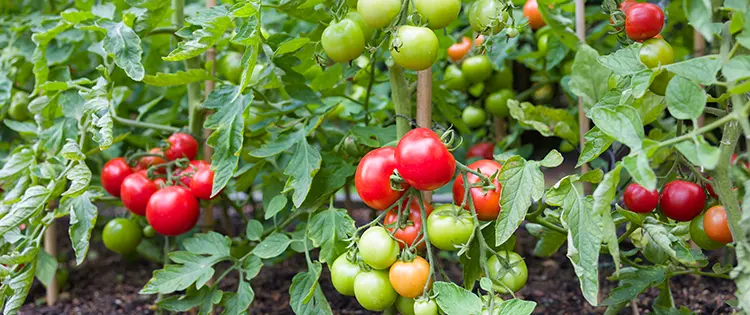
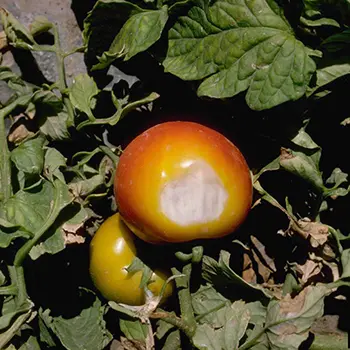
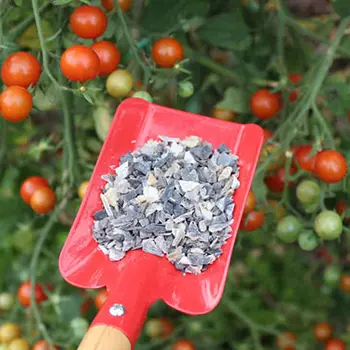
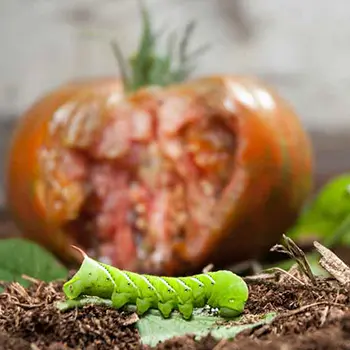









The simplest way I’ve found to deal with blossom end rot is by using eggshells. I save them during the non-garden months and grind them into a fine powder. When I pot my seedlings, I mix a good amount of the ground egg shells into the soil. It take s while for the calcium to work it’s way into the plant, so by the time tomatoes are getting big enough to ripen, NO blossom end rot! I also add epsom salt while the tomatoes are ripening so they end up with a stronger tomato taste.
Years ago I learned to use powdered milk under the plants when putting them in my garden. Another inexpensive source of calcium for the plants.
Wow that’s a new tip. Thanks so much
Fertilizer tea?